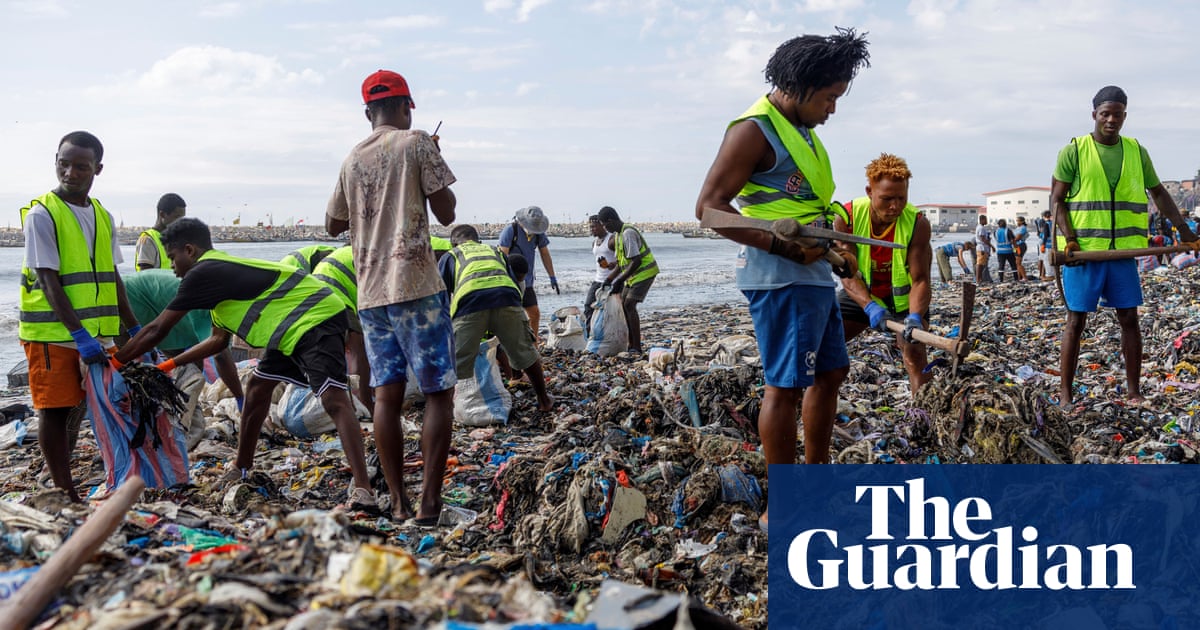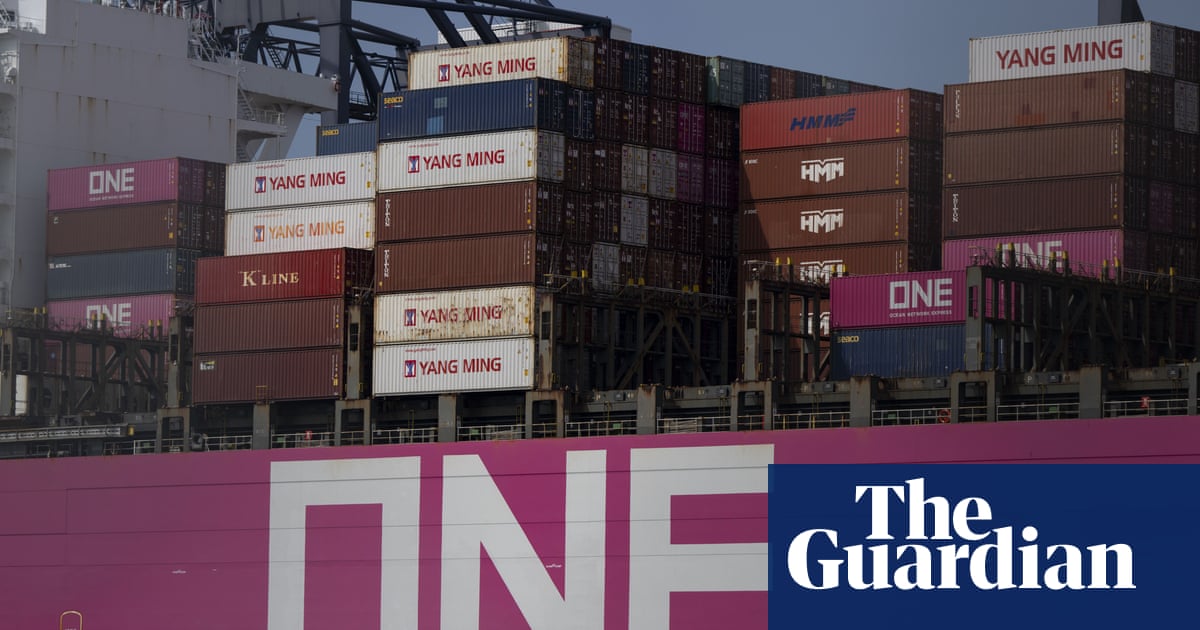#fast-fashion
#fast-fashion
[ follow ]
#shein #sustainability #tariffs #e-commerce #environmental-impact #sustainable-fashion #textile-waste #france
fromwww.theguardian.com
2 weeks agoTell us: have you ever had an allergic reaction caused by your clothes?
Research has shown that synthetic fabrics, particularly from fast fashion retailers, are often treated with a range of hazardous chemicals - including dyes containing heavy metals such as lead, antimicrobial agents, and anti wrinkle treatments - that can cause allergic reactions such as skin irritation or respiratory issues in some people. If you have had an allergic reaction, or more serious health effects, that you suspect have been caused by your clothes we want to hear from you.
Public health
fromThe Nation
2 weeks agoWhat Your Cheap Clothes Cost the Planet
The Atacama Desert in Chile is one of the most beautiful and forbidding places on earth, so dry that it's sometimes used by scientists to test-run Mars missions. Most years, the area sees less than half a centimeter of rain, but this past September unusually heavy precipitation brought forth a desert bloom, blanketing the ground with delicate purple flowers that disappeared as quickly as they'd appeared.
Environment
fromwww.theguardian.com
3 weeks agoVelvet, tartan and puff sleeves: 22 sequin-free party looks for Christmas and beyond
Judging by the sale and well-stocked rails, the items didn't appear to be in demand, and with so many identikit sequin garments in existence (more than 500 black sequin vests at the same price and under on Vinted at the time of writing in the UK), what's the point of producing more every year? You may have guessed I am not a fan of sequins.
Environment
fromBusiness Insider
4 weeks ago4 fashion brands and retailers that filed for bankruptcy in 2025 - and why
An uncertain economic environment has led some consumers to be more selective about where they spend their money. As a result, some are reaching for cheaper styles - fast-fashion retailers like Shein took market share from competing brands in 2024, according to data and analytics company GlobalData - or buying secondhand clothing. Many retailers and restaurants, such as baby apparel brand Carter's and department store chain Macy's, have been shuttering stores.
Fashion & style
#social-media
Social media marketing
fromNon Profit News | Nonprofit Quarterly
7 months agoAs Long as Social Media Is Around, Can We Really Break Free of Overconsumption? - Non Profit News | Nonprofit Quarterly
Social media drives consumer overconsumption, influencing buying habits despite an awareness of sustainability concerns.
fromAxios
3 months agoThe new fashion label check: 100% cotton
Catch up quick: Fast fashion makes it easy to buy cheap, trendy clothes. But some shoppers, especially those focused on sustainability, are shunning what they see as low-quality synthetics in everything from basics to luxury brands. Just this week, some Swifties were seeing red about Taylor's latest limited-edition cardigan, partly because it's made from a lot of plastic. State of play: Roughly 9,000 TikTok posts were tagged #NaturalFibers during the first half of 2025 - up more than 230% from the same time last year, according to data the platform shared with Axios.
Fashion & style
Business
fromBusiness Insider
3 months agoChinese companies cracked the code on getting people at home hooked. Now, they're exporting that playbook globally.
Chinese consumer companies are exporting domestic playbooks and brands to Western markets, achieving rapid global expansion across food, fashion, and retail.
fromwww.theguardian.com
3 months agoFast fashion's quick decline: Asos and Boohoo have that post-Covid feelling
Four years ago Asos, and its fellow online fast fashion purveyor Boohoo, were booming as the high street suffered from Covid pandemic lockdowns, and largely housebound shoppers had cash to spare for slouchy leisurewear. They thought shoppers had been permanently converted to online shopping, and stocked up accordingly, only for Asos to find itself lumbered with a 1bn stock hangover as, post-pandemic, young and old alike once again enjoyed the freedom to try on clothes and stalk the high street.
E-Commerce
fromLondon Business News | Londonlovesbusiness.com
4 months agoThe timeless appeal of vintage clothing and its quality - London Business News | Londonlovesbusiness.com
Fast fashion, which emerged in the 1990s, has changed global clothing consumption by prioritising affordable, mass-produced garments. However, this model comes with significant environmental and social costs. Socially, fast fashion is tied to serious issues like labour exploitation, particularly impacting women and children in developing countries, which continues to tarnish many big brands' reputations. The true cost of fast fashion The fashion industry produces around 8% of global greenhouse gas emissions and uses a massive amount of water annually.
Fashion & style
fromBusiness Insider
7 months agoShein and Temu purchases now cost a lot more - unless you're in Europe
"Consumers will see higher prices and potentially longer shipping times as Shein and others move from direct shipping to sending volumes of goods in containers to the USA to be re-sent from their USA-based warehousing."
European startups
fromstupidDOPE | Est. 2008
7 months agoGU and UNDERCOVER Reunite for a Bold Summer 2025 Capsule Under the UG Label | stupidDOPE | Est. 2008
The Summer 2025 UG collection merges Takahashi's rebellious spirit with GU's ready-to-wear sensibility, creating a bridge between high concept and everyday comfort.
Fashion & style
fromFast Company
7 months agoForever 21 closing stores this week: Update on list of doomed locations as 'sale termination date' passes
"The past 12 months have been rough for many retail chains, with major names filing for bankruptcy and closing hundreds of locations, leaving a significant impact on the retail landscape."
Startup companies
fromNon Profit News | Nonprofit Quarterly
8 months agoWhy Fashion Education Needs to Care About Climate Change - Non Profit News | Nonprofit Quarterly
Fashion education still emphasizes traditional creative skills, leaving a gap in sustainability awareness. As the industry faces environmental crises, urgent reforms are needed.
Fashion & style
Environment
fromwww.independent.co.uk
8 months agoYour clothes are shedding bits of plastic. Here's what people are doing about it this Earth Day
The everyday clothing we wear contributes significantly to environmental plastic pollution.
Laundry releases millions of microplastic fibers that enter waterways and ecosystems.
European startups
fromNew York Post
8 months agoChinese garment factories that supply Shein shut down amid Trump tariffs: 'There are only risks to doing business with the US now'
The Trump administration's tariffs and policy changes are significantly impacting garment factories in China, particularly those that supply Shein.
fromNew York Post
8 months agoIt's the last day to use Forever 21 gift cards before they expire as fast-fashion retailer goes out of business
Forever 21's decision to close its stores signals a significant shift in the fast-fashion landscape, exacerbated by competition from online retailers and recent economic challenges.
Fashion & style
[ Load more ]























